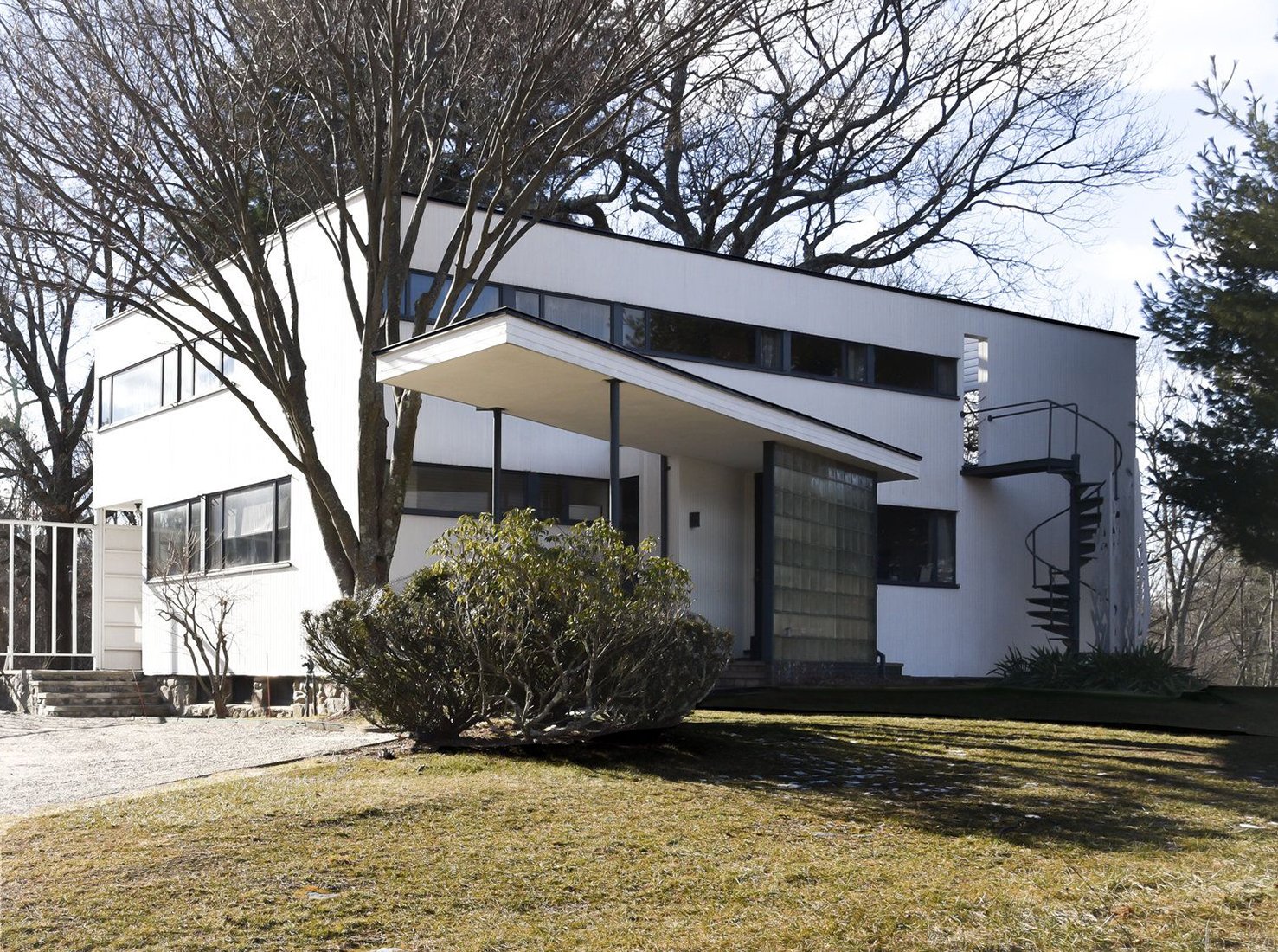#11305. Modernist White Facade: Clean Geometry with Ribbon Windows
Before us stands a striking example of modernist architecture, likely inspired by Bauhaus and the International Style of the early 20th century. The snow-white facade is characterized by clean geometric forms, flat roofs, and an absence of excessive decoration—key principles of the modernist movement.
The architectural composition consists of several clearly defined volumes of varying heights, creating a dynamic silhouette. Particularly notable is the cantilevered canopy above the entrance, supported by thin black columns—this feature is not only functional, providing protection from precipitation, but also visually lightens the massiveness of the white facade. The horizontal ribbon windows, characteristic of modernism, provide abundant natural light and emphasize the linearity of the composition.
An interesting detail is the spiral external staircase on the side facade—an engineering element that becomes an important part of the architectural image. The contrast between the white wall surfaces and dark window frames enhances the graphic quality of the building. The house is organically integrated into the surrounding natural landscape with preserved tall trees, creating a dialogue between man-made geometry and natural forms.
When designing a contemporary facade in a similar style, it's worth paying attention to the use of contrasting materials, playing with volumes of different heights, creating expressive horizontal lines through ribbon glazing, and integrating functional elements (canopies, staircases) into the overall aesthetic concept. It's also important to remember the balance between minimalist purity of forms and necessary expressiveness, which can be achieved through proportions and compositional accents.
